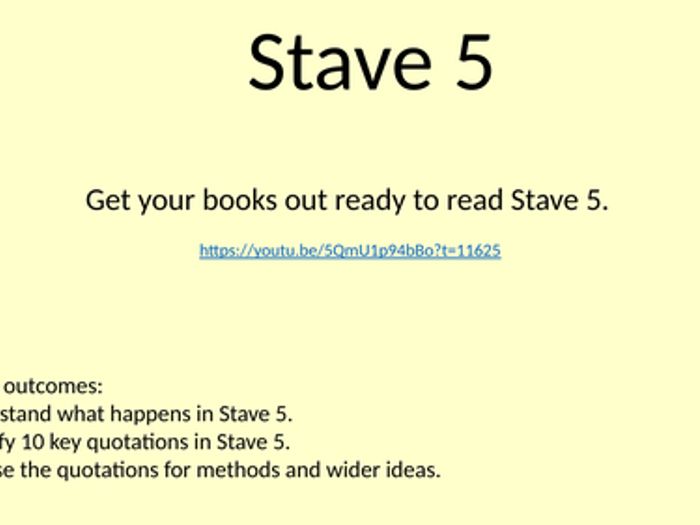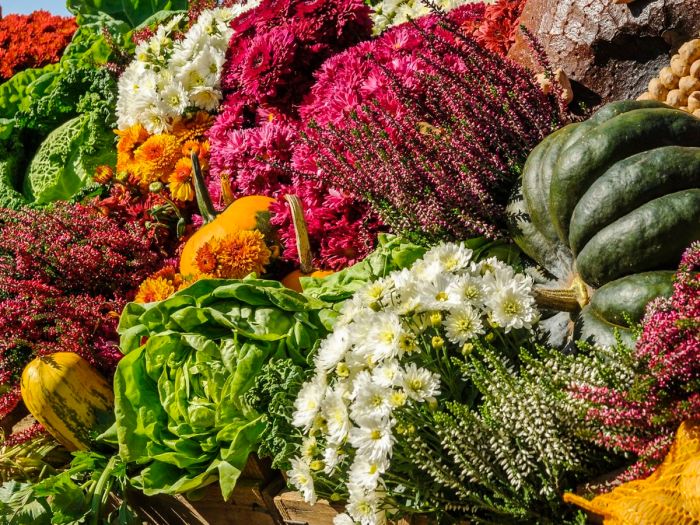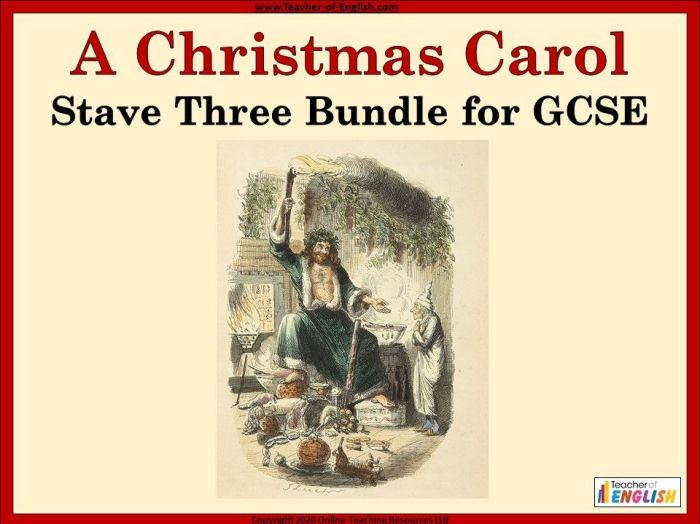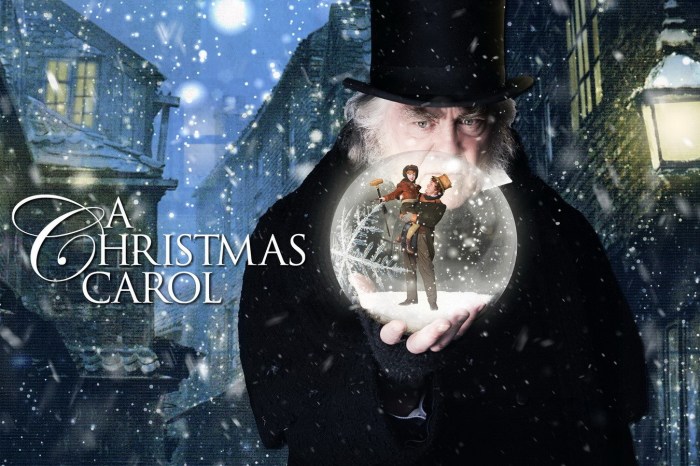Stave 3 a christmas carol questions – In the captivating third stave of Charles Dickens’s A Christmas Carol, the Second Spirit takes Ebenezer Scrooge on an extraordinary journey through his past, profoundly shaping his character and illuminating poignant social commentary. This pivotal chapter explores the significance of empathy, compassion, and the transformative power of revisiting one’s own history.
Stave 3

In the third stave of “A Christmas Carol,” Scrooge is visited by the Second Spirit, the Ghost of Christmas Present. This spirit plays a crucial role in Scrooge’s transformation by showing him the joy and abundance of the present moment.
Significance of the Second Spirit’s Arrival
The Second Spirit’s arrival marks a turning point in Scrooge’s journey. After the Ghost of Christmas Past confronted him with his past regrets and the Ghost of Christmas Yet to Come revealed the consequences of his present actions, the Second Spirit offers a glimpse of hope and redemption.
By showing Scrooge the beauty of the present, the spirit challenges his miserly ways and encourages him to embrace the joy of human connection.
Appearance and Demeanor of the Second Spirit
The Second Spirit is described as a “giant” figure, radiating light and warmth. He wears a flowing green robe adorned with symbols of nature, representing the abundance and prosperity of the present. His demeanor is benevolent and compassionate, and he carries a torch that illuminates the path of those he visits.
Symbolism of the Second Spirit’s Gift
The Second Spirit’s gift to Scrooge is a simple yet profound one: a magic robe that allows him to travel unseen through the streets of London. This gift symbolizes the power of observation and empathy. By granting Scrooge the ability to witness the lives of others, the spirit encourages him to recognize the joy and suffering that coexist in the world and to develop a sense of compassion for his fellow human beings.
Past Christmases

The Second Spirit transports Scrooge through his past Christmases, revealing pivotal moments that shaped his character.Revisiting Scrooge’s childhood exposes the formative experiences that influenced his present demeanor. Witnessing his isolated and lonely childhood, Scrooge gains insight into the emotional roots of his greed and misanthropy.
This confrontation with his past prompts a profound shift in his perspective.
The Cratchit Family’s Christmas Celebration
A central episode in Scrooge’s past Christmases is the Cratchit family’s humble celebration. The spirit shows Scrooge the warmth and joy shared by the Cratchits despite their poverty, highlighting the stark contrast between their lives and his own. The celebration serves as a powerful reminder of the true meaning of Christmas and the importance of human connection.Through
these glimpses into his past, Scrooge recognizes the consequences of his past actions and the potential for redemption. The Second Spirit’s guidance initiates a transformative journey, leading Scrooge towards a more compassionate and empathetic future.
Scrooge’s Transformation

The Ghost of Christmas Past transports Scrooge through his past Christmases, revealing the reasons behind his miserly nature. This journey leads to a gradual shift in Scrooge’s attitude and behavior.
Empathy and Compassion
Scrooge witnesses scenes from his childhood, where he experiences loneliness and neglect. These memories evoke feelings of empathy and compassion within him, softening his hardened heart. As he sees his younger self longing for love and connection, he begins to understand the emotional void in his own life.
Second Spirit’s Departure
The Second Spirit’s departure symbolizes the end of Scrooge’s journey into the past. It represents his acceptance of his past experiences and the need to move forward. The Spirit’s words, “These are but shadows of things that have been. They have no consciousness of us,” remind Scrooge that he has the power to change his present and future.
Social Commentary: Stave 3 A Christmas Carol Questions

Stave 3 of A Christmas Carolpresents a scathing indictment of the social conditions in Victorian England, particularly the plight of the poor and the working class.
The Second Spirit, the Ghost of Christmas Past, takes Scrooge on a journey through his own past, showing him the poverty and deprivation he experienced as a child and the hardships faced by the Cratchit family.
The Plight of the Poor, Stave 3 a christmas carol questions
The Spirit’s visit highlights the desperate conditions in which many poor people lived during the Victorian era. The Cratchit family, despite Bob’s meager earnings, struggles to make ends meet. They live in a cramped and squalid house, and their children often go hungry.
The Spirit also shows Scrooge the workhouses and prisons, where the poor and destitute were often forced to live in inhumane conditions. These institutions were overcrowded, unsanitary, and rife with disease.
Relevance to Victorian Society and Beyond
The social issues addressed in Stave 3 were not unique to Victorian England. Poverty, inequality, and social injustice have plagued societies throughout history and continue to do so today.
Dickens’s portrayal of the plight of the poor in A Christmas Carolremains relevant because it exposes the human cost of social inequality. It reminds us of the importance of compassion, empathy, and the need to address the root causes of poverty and suffering.
Clarifying Questions
What is the significance of the Second Spirit’s gift?
The Second Spirit bestows upon Scrooge a magical lamp, symbolizing the power of introspection and the ability to illuminate one’s own past.
How does Scrooge’s childhood influence his present behavior?
Revisiting his childhood, Scrooge realizes the emotional wounds inflicted upon him, fostering his miserly and isolated nature.
What social issues are addressed in Stave 3?
The Second Spirit’s visit highlights the plight of the poor, the exploitation of child labor, and the stark inequalities prevalent in Victorian society.